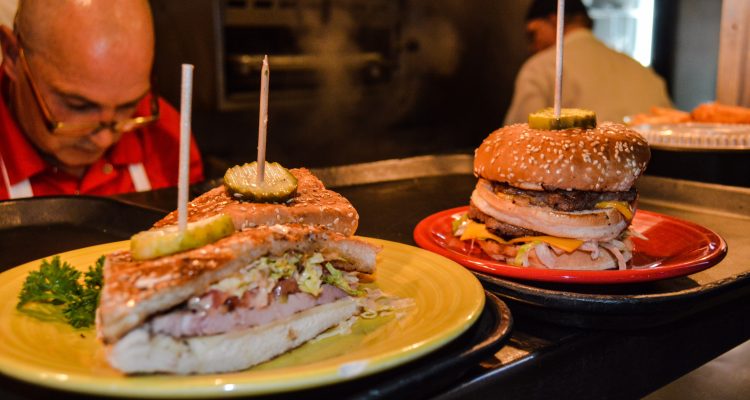(Writer’s Note: This is the third in a series of stories that will concentrate on the history of one of the most storied restaurant franchises in Wheeling since the 1950s.)
He looked like the Big Boy, and he even answered to it when a customer would summon him with the nickname, and that’s because Jim Edge looked like the statue standing just outside the front door.
“It really never bothered me, and I think after a while even some of the employees probably didn’t know my real name,” Edge recounted. “When a customer hollered out, ‘Big Boy’ I knew who they were talking to, that’s for sure.
“Customers would tell me that I looked like the Big Boy all of the time, and a lot of it had to do with the way I combed my hair, and I have a round face and dimples,” he continued. “And I still get it these days. People still call me that, and most of them have no idea that I worked for the company for as long as I did. They just still remember Elby’s.”
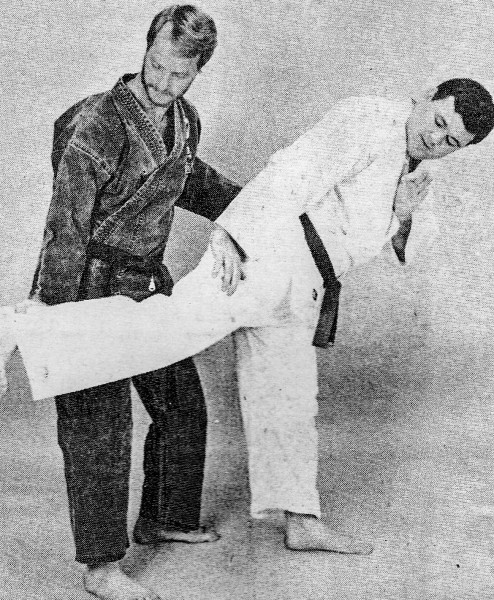
Edge scaled the ladder to assistant manager, manager, and then was a district manager supervising Elby’s in Ohio and then Pennsylvania until he departed at the time of the sale to the Elias Brothers in 1999. When initially hired, though, the cooks were paid $1.25 per hour, dishwashers earned $1.15, and the waitresses were offered 65 cents per hour.
Ironically, though, Edge, who began his Elby’s career in 1967, when he was hired as a short order cook for the restaurant located on National Road in Wheeling, still has never eaten a Big Boy, double-decker cheeseburger.
“I made thousands of Big Boys during my years with the company, but I never ate a Big Boy in my life,” Edge admitted. “I’m not really sure why that was, but it was probably because of how many times I had to make them for the customers.
“I used to have to go on the training trips when we were opening a new store, and on the first day we would make Big Boys for everyone working there so they would know the product as well as they could so they could answer the questions that the customers had about it,” he said. “On those days I wouldn’t eat lunch.”
He realized the passion that was present for the Big Boy very quickly after he was assigned to prepare the to-go items and items from the curb-service menu.
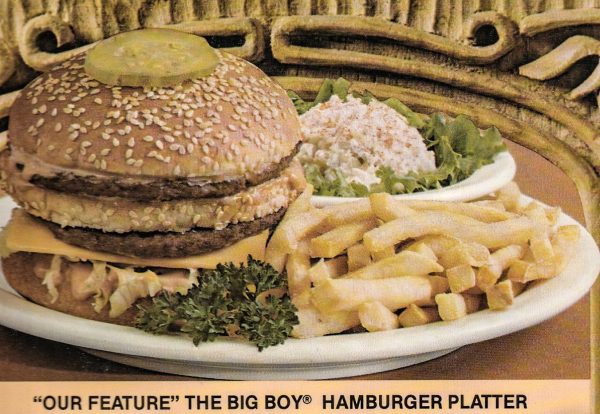
“The first year I was there, one of the specials they had was Big Boys at half price, and the reaction was huge. It was nothing to be an hour behind during that special. I made one after another after another,” Edge recalled. “The first day of that special I worked a 17-hour day because I just kept making Big Boys.
“But all the time it was nothing to have 15 to 20 orders for Big Boys in the window at any given time, and then they sent out all of the coupons for free Big Boys to all the area Little Leaguers; we were crushed for at least a couple of weeks. And that was all Big Boys, too,” he continued. “When I first got the job, I was 17, and I figured the Big Boy was a pretty big item because, well, there was a statue out front. But I had no idea how popular it was. None at all.”
Gregg Boury, the youngest son of co-founder George Boury, explained that the passion for the double-decker continued for many years, but as eating trends swayed away from high-calorie items, some of the love for the world-famous sandwich began to fade.
“During the early years the Big Boy was the big draw. By the later years the attention to it had dwindled because people’s preferences were changing away from a double-decker hamburger, but it was a big item for Elby’s for the majority of the time the restaurants were open,” Boury explained. “For a long time you could not look at the kitchen window and not see four, five, six Big Boys waiting to be served. The Big Boy was huge for a lot of years.
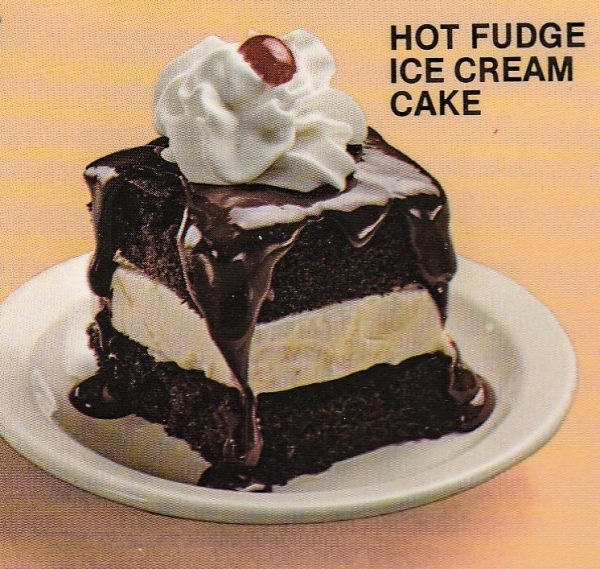
“The trend as far as customer preference was concerned went toward healthier preferences and away from fried foods and the big burgers,” he continued. “But when we made those Big Boys, the Big Boy sauce was put in a circle on all three buns so it usually got pretty messy before you were finished eating it.”
But it wasn’t just the Big Boy that proved popular, Edge insisted.
“Bucket after bucket of fried chicken. One after another,” he said with a laugh. “To this day I have no idea how many pieces of chicken I’ve fried through the years, but it’s got to be in the thousands. People really loved the chicken; that I remember very, very clearly.”
“But then I was moved to the frontline, and that’s where I had to start cooking the whole menu. While we still had the curb service, the menu was limited to the sandwiches and things that made sense for that kind of service, but in the front kitchen there were all the dinners to make, too,” he recalled. “Everything from spaghetti to the half-pound ground round to the fish and chips to the Brawny Lad and so and so on.
“And you can’t forget about the strawberry pie and the other desserts. The pies, the Hot Fudge Cake, and banana splits and the sundaes. And those milkshakes. I think we had the best milkshakes of any place selling them, and that was because of the attention that was paid to the quality. It was a system, and it worked.”

Order In!
Eight minutes. Or 10 minutes for a steak dinner.
When orders were placed at an Elby’s Family Restaurant, the server took the requests to the window and time stamped it. When those orders were complete and placed in the window, the short order cook time stamped it again and hit a button that illuminated a server’s “number” so she or he would know it was delivery time.
And every single server was trained to serve the hot foods hot and cold foods cold.
“We had a room of auditors at the commissary, and they did nothing else other than checking those times,” said Boury, who was employed as a manager for more than 20 years. “That’s how important it was to the overall satisfaction. The quality of the food was paramount, and so was getting it to the customers as quickly as possible.”
Donna Holmberg, originally a waitress in Center Wheeling before she was promoted to service supervisor, said the Boury brothers employed a system that consistently delivered satisfaction.
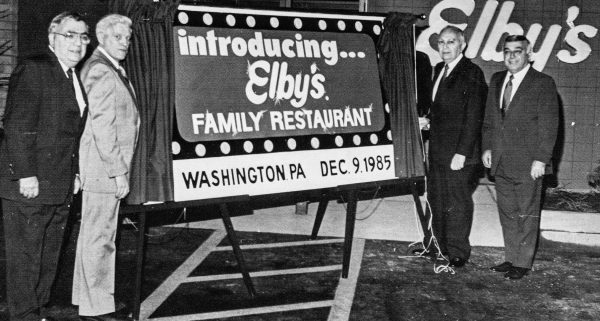
“In the restaurant industry you have to have of both quality food and quality service. You really can’t have just one or the other,” she explained. “Those two things have to go together because the food can be great, but if the server is not nice to the customer or is slow, that customer isn’t going to come back. That goes for the food, too.
“It’s a difficult business to satisfy people when you’re talking about their food and their experience,” she said. “That’s why the Boury brothers had the steps they had and why they selected the products they used to make what was on the menu.”
It was the little things, too, Edge recalled, like the onion rings, the Grecian bread, and the cole slaw, and often the quality was inspected by members of management and evern by the Boury brothers.
“And they checked on the consistency all of the time. One of them would do walk-throughs, take a taste of this and that to make sure everything was the way it was supposed to be. Mike and (operations manager) Tom (Johnson) used to do that all of the time, and so did the other brothers,” he said. “They checked everything, including the salad dressing like the blue cheese dressing. We called it our house dressing because we would add a little French dressing to it to make it just a little different than what people could get anywhere else.
“If George, Mike, or Ellis noticed something wasn’t right during one of their visits, they let us know about it, and the investigation began,” Edge continued. “Some people may have thought that they were control freaks, but that’s not what that was about. It was more about the experience and getting the customers to come back again, and it worked for a lot of years; I can tell you that.”
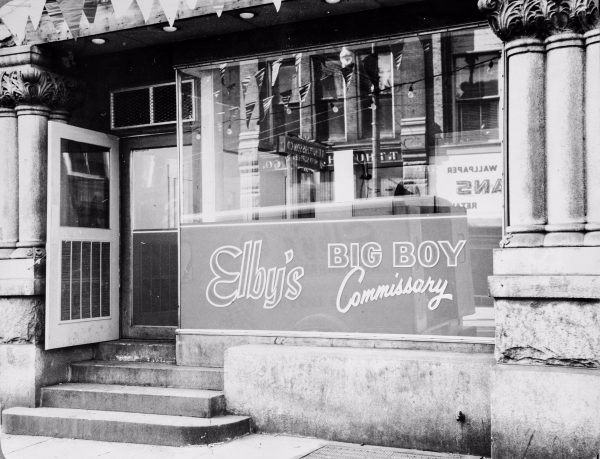
Edge reported the roles filled by the brothers. Ellis was the people person, George was the ideas and the moneyman, and Mike Boury was all about the food.
“Mike knew everything about everything when it came to what was on the menu and how it was prepared,” he said. “If something wasn’t slightly right, it may not have been obvious to the common customer, but it was blatant to him instantly, and he sure let you know about it.”
Gregg Boury, in fact, owns memories of his uncle’s temper.
“All three of the brothers had a temper, but I believe my Uncle Mike had the shortest fuse of the three, especially when it came to the quality of the food,” he revealed. “I’ve seen the veins pop out in his neck over the food, and that was because of how important he believed the food was.
“He instilled something throughout the entire chain, and that was a dedication to making sure things were right and the way they were supposed to be. And that held true for all of the restaurants all the way down to the commissary’s production kitchen where things like the pie shells, the strawberry glaze, the many different sauces, and several other ingredients were,” he said. “That was Uncle Mike’s domain, and I believe everyone just left him alone because he filled his role very, very well.
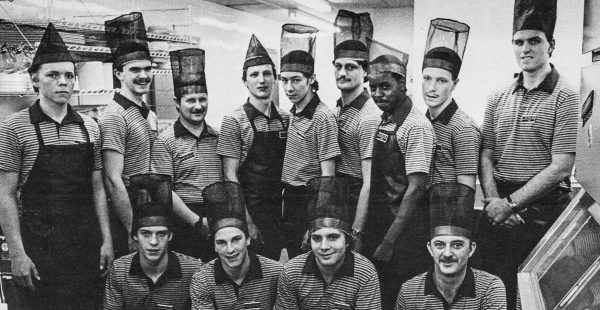
“Everyone knew the food on the menu was Uncle Mike’s thing, and it was left to him. Nobody disputes that, not even my father,” Boury recalled. “The food at Elby’s was my Uncle Mike’s world. He had a knack for everything from the quality of the food, the visual presentation of the food, and conceptually taste wise, and price wise. That was all Uncle Mike.”
While George and Ellis had their offices within the Boury Inc. building or in the Boury Center after it was constructed on Main Street in downtown Wheeling, Mike’s office was always at the company’s commissary in downtown, on 19th St. in East Wheeling, or along Ohio Route 7 in Martins Ferry.
“And that was because Uncle Mike was 100 percent hands-on when it came to the products that were used to produce the items on the Elby’s menu,” Boury reported. “He was there for every step for a food-product decision. That’s what he did. That was his role.
“My Uncle Mike was very passionate when it came to food quality, and he selected products that were very unique to this area, but that’s because he was always striving for the best possible,” he continued. “And I’m pretty sure he went to bed every night thinking about it and coming up with his plan for the next day at his office at the commissary.”
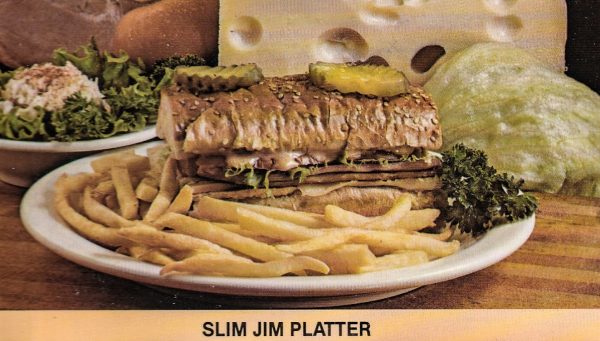
The Fare
Jim Edge still prepares a few of his all-time favorites from his decades with Elby’s, like the Grecian Bread and some of the burgers, as well as the Hot Fudge Cake, the cream pies, and, of course, the strawberry pie.
“I grew up with those things, and so did my kids,” he explained. “I have my favorites, and so do they. But my cream pies are not made exactly the same way, but it’s really close to it.
“Every once in a while one of my kids will ask or I’ll just feel like something, so why not. I spent enough time learning how to make them and it’s not like those recipes and the procedures are going to fade from memory,” Edge said with a laugh. “It’s engrained, and it should be after 32 years.”
Gregg Boury admitted that his favorite menu item of all-time was the Slim Jim sandwich, an offering prepared with lettuce, tomato, two ounces of ham, a half-ounce of Swiss cheese, and Slim Jim sauce between two pieces of sesame-seeded French bread.
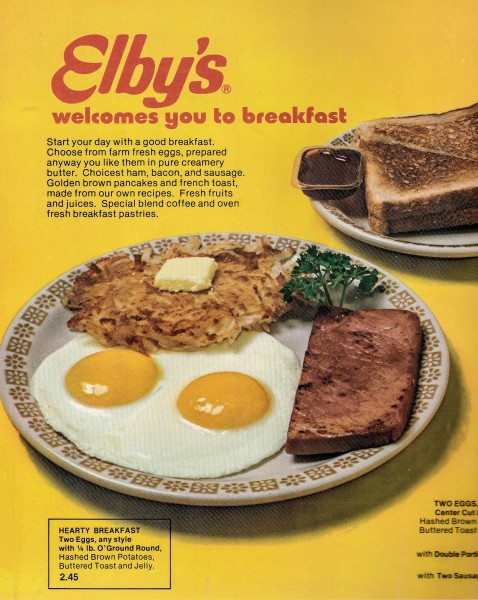
“I also really enjoyed the fried oysters, and our shrimp dinner was absolutely delicious,” he said. “The spaghetti dinner was also one of my favorites, and so was the fish and chips. I really loved our tartar sauce, so the fish and chips was something I ordered often.
“But as far as what sold the most really depended on what the weekly special was because that was usually the leading seller across the entire chain. I remember when shrimp would go on sale, we would peel, devein, soak it to get that iodine taste out of it, and then we would bread so much pounds of shrimp during those times because we knew it was going to sell like crazy,” Boury continued. “As far as the general menu, there were several big sellers like the Big Boy, the Slim Jim, the spaghetti dinner, the fish and chips. They were consistently great sellers.”
Elby’s also featured a pair of different food festivals each year of operation, and both were successful attempts to take advantage of cheaper pricing for strawberries and a plethora of seafood items.
“They were the Seafood Festival usually during Lent, and the Strawberry Festival, and when they were going on those items went through the roof,” he said. “The decorations would change inside the restaurants, and the prices were decreased a good bit because of the great deals my Uncle Mike would find on the market. I know the customers loved those festivals, and I’m sure the employees got pretty tired of making those strawberry pies.”
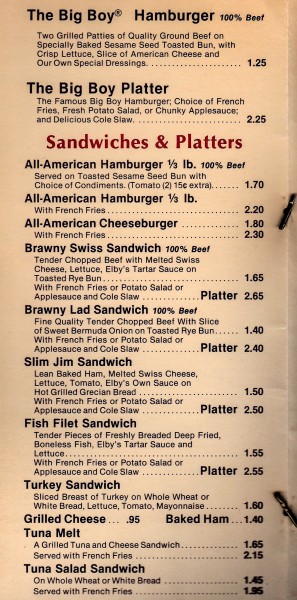
The price of a Big Boy in 1982 was only $1.25, and if you added the fries and the cole slaw to complete the platter, it was a dollar more. The Slim Jim was $1.50, the fish and chips dinner was $2.65, and the Hot Fudge Cake sold for just 95 cents.
If sold today, Boury estimated, the Big Boy would be $4.50, the Slim Jim $5, the fish and chips would be $6.50, and the Hot Fudge Cake likely would sell for $3.50.
“But those price estimates are only guesses because I haven’t been in the restaurant business now for several years,” he admitted. “But the way the brothers went about it, it was all about getting the customers back in the door so they were convinced that offering great prices was the best way to achieve longevity.
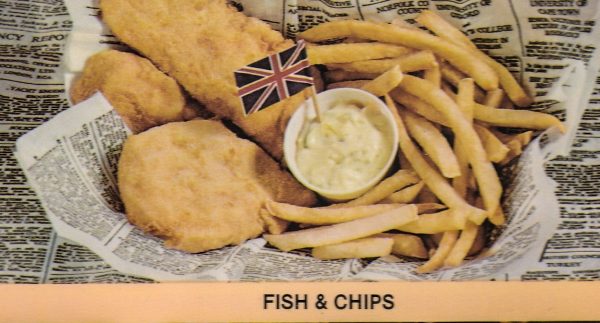
“And the same went for the breakfast service, and breakfast was huge for Elby’s,” Boury said. “There were really two eras of breakfast for the chain, and that was the pre-breakfast buffet era, and then there were the years when we had the breakfast bars in almost every restaurant. The buffet was a complete revolution throughout the company, and that idea came from Big Boy.”
The restaurants in mall complexes were not retrofitted for the breakfast bar feature, an area that doubled as the salad bar after 11 a.m., but the amenity was in-house constructed for at least 95 percent all of the eateries, and on weekends the scrambled eggs, bacon, sausage links and much more were served late-night, too.
“When the breakfast bar was put into the Elby’s in Woodsdale, the amount of food that was consumed was incredible. It was nothing to go through 160 pounds of bacon on a Sunday morning,” he continued. “The entire staff had to get mentally prepared on Sundays because we all knew when church was over, and we knew the restaurant would quickly fill up, and then the lobby would have a big crowd waiting on tables.
“And the late-night breakfast bar was a big hit, too, for the people who were out and about on Friday and Saturday nights,” Boury recalled. “I think for some people who went pretty late at night, the breakfast bar was the best part of what Elby’s served. I think that’s crazy, but that’s what some people have told me.”
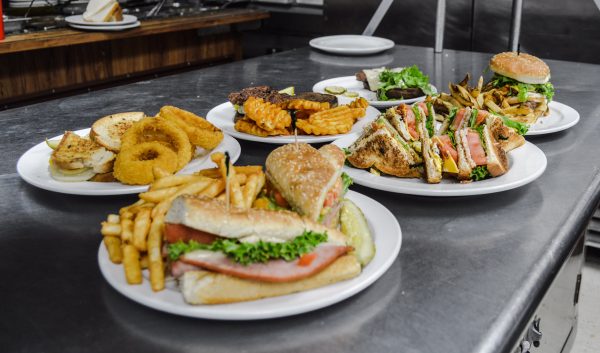
Emulation
He didn’t have just one favorite menu item when he trekked to the Moundsville Elby’s, a location consistently in the restaurant company’s top 20, and that is why Gary Workman placed five different sandwiches on his menu at Bob’s Lunch on 3rd Street.
The Brawny Lad appears on that menu as the same, but the Brawny Swiss is the, “Bob Swiss;” the Big Boy is named the “Bob Boy;” the Slim Jim is the, “Slim Gary;” the Patty Melt is the, “Patty Bob;” and the Club Sandwich is, “Bob’s Club.”
“I didn’t have the same thing when I went to Elby’s, and I went to Elby’s a lot. We all did,” Workman said. “I mixed it up, but one thing I always had on Friday nights was the Hot Fudge Cake. We have that here, too, but only during the warmer months. It will be back on the menu in April.
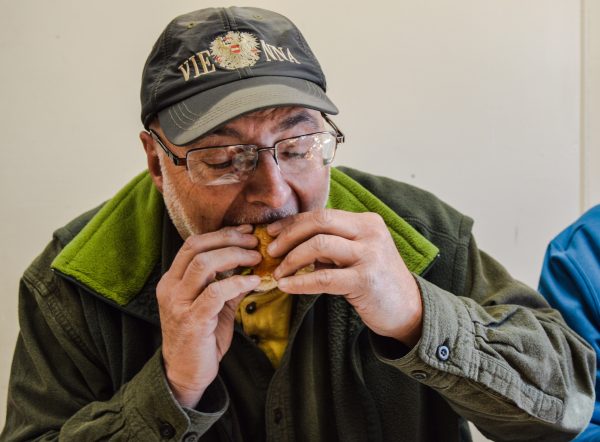
“We have those sandwiches on the menu because of how popular Elby’s was here in Moundsville. That place was packed every evening of the week,” he recalled. “You went there with the guys before or after bowling at the Reilly Lanes or before you went to the drive-in for a double feature. And it was always great.”
Bob’s Lunch first opened in 1947, and the eatery moved to its current location in 1952, when it was still owned by Bob and Dick Hicks. Workman has owned the restaurant twice, once with his ex-wife until the late 1990s, and then he purchased the property again in 2011 after Bob’s was closed for close to three years. That’s when Workman decided to make these former Elby’s items available.
Workman’s recipes are, of course, close but not exact because that’s an impossibility today. Not only have the Elby’s recipes remained locked away from the public since the Boury brothers sold the chain, but many of the ingredients are no longer available.
“But those items today are not the same as they were, and there are good reasons for that,” explained Gregg Boury, who has ventured to Bob’s Lunch. “No one grills the outside of the buns anymore; they can’t get the same quality of meat anymore; the cole slaw is never right; and the Jamaican relish that they used for the tartar sauce is not even made anymore. So to replicate those recipes today is impossible.
“The fish is no longer available anymore because the Iceland cod is no longer allowed to be fished, so that recipe cannot be sourced. The glaze for the strawberries is not available, and what’s available in the stores today is horrible by comparison,” he continued. “Today is a different time.”
Plus, Workman has altered a few of the basics, too. A perfect example is the “Bob Boy” because at Elby’s the Big Boy did not arrive at the table with onion beneath the buns.
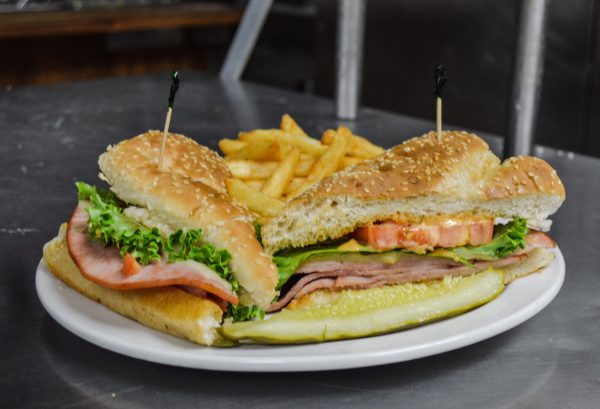
“Our customers seem to like it that way, so that’s how we serve it,” he said. “All of those sandwiches are very popular here, and the people know the history of Elby’s, too. We all have our stories about it, and even the younger people here wish it would come back because they feel as if they missed out on something. And they sure did.
“I know I went to Elby’s three times a week, maybe more,” Workman said. “It was packed even late-night after bowling or a high school football or basketball game,” Workman continued. “So those items are on our menu because it’s a tribute to those memories, and because people still enjoy them very, very much.”
“I thought they’re doing an outstanding job with these items,” Boury said. “I know Gary was nervous about me coming to Bob’s to try them all, and I thought that understandable because he knows I know exactly how these sandwiches are supposed to taste and how they’re supposed to be built.
“There were a few differences, but I didn’t notice anything critical,” he continued. “Of all of them, I thought the Slim Jim was the closest to what we used to serve at Elby’s. They got the ham right, and the Slim Jim is all about the right ham.”
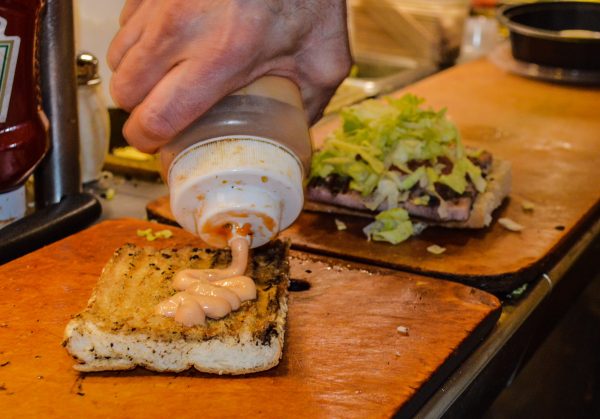
But there was one difference between the “Big Bob” and the “Slim Bob,” Boury said.
“If you looked at the sauces for the Big Boy and for the Slim Jim side by side, you probably thought they looked pretty much the same. But there was a very important difference between the two,” he revealed. “It was considered sacrilege if a short order cook put Slim Jim sauce on a Big Boy and vice versa.
“The difference between the two sauces is something that some may consider minor if they knew it, but it wasn’t. I won’t explain it because it was a trade secret, but it made a big difference to my Uncle Mike and to the customers, too,” he continued. “I do not have a problem with the fact that Gary and some others in the area serving those kinds of meals. It’s somewhat flattering, really.”
T.J.’s Sportsgarden has been opened for more than 30 years and is owned and operated by T.J. and Bonnie Radeveski, and Bonnie is the daughter of the late Mike Boury. The restaurant/sports bar features televisions everywhere, also a plethora of pool tables, video games, and local sports-related memorabilia.
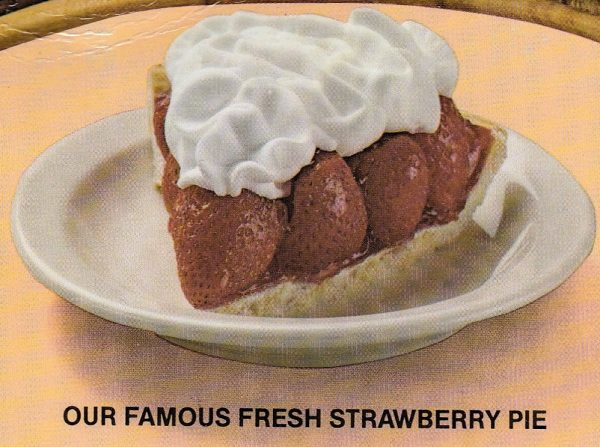
On the menu appear the fish and chips and the Patty Melt, but so do the “Big T” (the Big Boy), the “Slam Jam” (the Slim Jim), the “Brawny Mt’neer” (the Brawny Lad) , and the “Mt’neer Swiss” (the Brawny Swiss). In a single hour while sitting at the counter at T.J.s Sportsgarden and Restaurant, situated just a little east from the original location of Elby’s in Wheeling, veteran cook Bill Grigsby prepared eight “Big T’ double-decker cheeseburgers, seven “Slam Jams,” and four “Mt’neer Swiss” sandwiches.
“A lot of people still remember Elby’s and everyone had their favorite item on that menu,” said Grigsby, who began his cooking career as a short-order cook at Elby’s. “We have several of those items on our menu here at T.J.’s, and I make them several times a day every single day when I work.
“And I’m not real sure which is more popular than the other, the ‘Big T’ or the, ‘Slam Jam,’ which is what a Slim Jim is called here,” he said. “We have a pretty big menu here now but without fail our customers find those items and that’s what they order every single time they come here.”
Elby’s Family Restaurants may be a mere memory now, but many of the traditions live on at TJ’s and Bob’s, and in the minds of many in the Upper Ohio Valley and beyond.
Weelunk.com publishes daily, to receive notification of new stories like this one, be sure to like us on Facebook here: Weelunk


